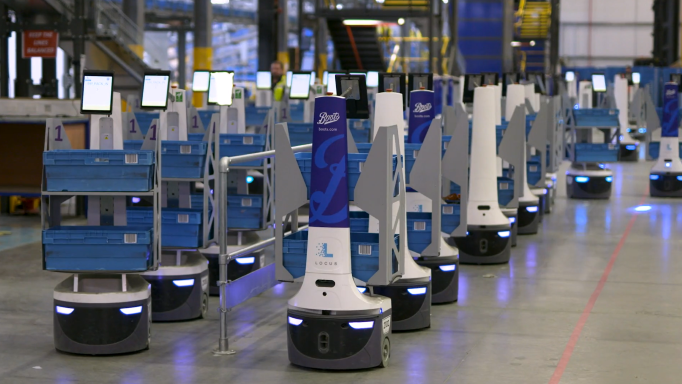Locus Robotics hits one billion pick landmark
15th September 2022

Locus Robotics, a market leader in autonomous mobile robots (AMR) for fulfilment warehouses, has surpassed the one billion units picked milestone. This new achievement was attained just 59 days after Locus registered 900 million units picked.
“Reaching our one billion pick milestone underscores the critical business value that Locus’s proven technology brings to our customers around the world, every day,” said Rick Faulk, CEO, Locus Robotics. “The need for cost-efficient robotics automation is a must-have as e-commerce volumes continue to increase and the labour shortages persist. Locus is proud to help our customers efficiently meet this challenge with robust, enterprise-scale automation solutions that position them for success today and in the future.”
It took Locus 1,542 days to pick its first 100 million units and just 59 days for the last 100 million picks. LocusBots have travelled more than 17 million miles in customers’ warehouses, the equivalent of more than 670 times around the Earth or 35 round trips to the Moon.
The Locus Solution has been deployed at more than 200 sites around the world, with as many as 500 LocusBots per site. Locus deployments include large-scale greenfield and brownfield sites, and multi-level mezzanine installations.
The billionth pick was made at a major home improvement retailer warehouse in Florida, and the item picked was a cordless rotary tool kit. The milestone pick was made just milliseconds ahead of two other picks: a scented candle from a homeware warehouse in Ohio, and a running jacket from a major global fitness and shoe brand in Pennsylvania. The rapid succession of the three picks underscores the high order processing volume taking place at Locus-deployed locations around the world.
“This latest milestone demonstrates both the incredible growth that Locus Robotics and the AMR industry have achieved, and also proves the feasibility of retailers and logistics companies’ relying on robotic picking technology,” said Ash Sharma, Senior Research Director at Interact Analysis. “One billion picks is an incredible milestone and is testament to Locus Robotics’ innovation and vision over the past few years.”
In the UK and Europe, the landmark is the latest in a significant list of achievements during 2022. In August, the company announced a new expansion agreement to deploy a total of 1,000 LocusBots at GEODIS’ worldwide warehouse locations, including the UK, over the next 24 months. The deployment agreement represents one of the industry’s largest AMR deals to date.
The deal followed the successful bid by Locus to secure one of the most prestigious titles in the European material handling industry, an IFOY award, which was presented in the Automated Guided Vehicle (AGV/AMR) category. The award followed a string of other titles in North America, including being named in the influential Inc. 5000 for the second successive year.
The picking landmark had been heralded at this month’s IMHX event, the largest material handling exhibition in the UK, where the company chose to launch its new eBook, The Intelligent Solution to Labour Challenges in the Warehouse, which outlines how the Locus Solution is so effective in helping fulfilment operations maintain productivity despite labour shortages.
As more shoppers continue to buy online, and as businesses prepare for what is expected to be another record-breaking holiday season, retailers and fulfilment warehouse operators are increasingly turning to AMRs to meet growing demand and mitigate labour shortages to avoid the risk of losing valuable customers.
Locus Robotics’ industry-leading robotics fulfilment solution enables brands, retailers, and third-party logistics (3PL) operators to easily meet higher order volumes and increasing consumer demand for e-commerce, retail, omnichannel, and manufacturing order fulfilment. Locus helps global customers, including CEVA, DHL, Boots UK, GEODIS, Whiplash, Saddle Creek, Quiet 3PF, Radial, and others, to double and triple their fulfilment productivity, lowering labour recruitment, training, and retention costs and improving workplace ergonomics.

